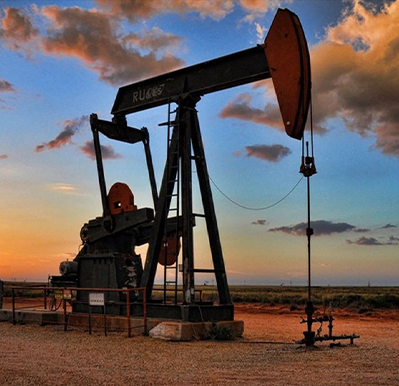- Afrikaans
- Albanian
- Amharic
- Arabic
- Armenian
- Azerbaijani
- Basque
- Belarusian
- Bengali
- Bosnian
- Bulgarian
- Catalan
- Cebuano
- Corsican
- Croatian
- Czech
- Danish
- Dutch
- English
- Esperanto
- Estonian
- Finnish
- French
- Frisian
- Galician
- Georgian
- German
- Greek
- Gujarati
- Haitian Creole
- hausa
- hawaiian
- Hebrew
- Hindi
- Miao
- Hungarian
- Icelandic
- igbo
- Indonesian
- irish
- Italian
- Japanese
- Javanese
- Kannada
- kazakh
- Khmer
- Rwandese
- Korean
- Kurdish
- Kyrgyz
- Lao
- Latin
- Latvian
- Lithuanian
- Luxembourgish
- Macedonian
- Malgashi
- Malay
- Malayalam
- Maltese
- Maori
- Marathi
- Mongolian
- Myanmar
- Nepali
- Norwegian
- Norwegian
- Occitan
- Pashto
- Persian
- Polish
- Portuguese
- Punjabi
- Romanian
- Russian
- Samoan
- Scottish Gaelic
- Serbian
- Sesotho
- Shona
- Sindhi
- Sinhala
- Slovak
- Slovenian
- Somali
- Spanish
- Sundanese
- Swahili
- Swedish
- Tagalog
- Tajik
- Tamil
- Tatar
- Telugu
- Thai
- Turkish
- Turkmen
- Ukrainian
- Urdu
- Uighur
- Uzbek
- Vietnamese
- Welsh
- Bantu
- Yiddish
- Yoruba
- Zulu
Stainless Steel Reducer Coupling for Efficient Pipe Connections and Fluid Flow Management
Understanding Stainless Steel Reducer Couplings A Comprehensive Overview
Stainless steel reducer couplings are integral components widely utilized in plumbing, piping, and various industrial applications. These fittings are fundamental in connecting pipes of different diameters, allowing for a smooth transition between two varying sizes. The use of stainless steel in their construction offers numerous advantages over other materials, cementing their position as a reliable choice across multiple industries.
What is a Reducer Coupling?
A reducer coupling is a type of pipe fitting that connects two pipes or tubes of different diameters. The design ensures that fluid flows smoothly from a larger pipe to a smaller one, reducing turbulence and minimizing the risk of disruptions in the flow. This fitting is particularly essential in systems where space constraints and varying pipe sizes are prevalent.
Benefits of Stainless Steel Reducer Couplings
1. Corrosion Resistance One of the standout characteristics of stainless steel is its inherent resistance to corrosion. This makes stainless steel reducer couplings ideal for demanding environments, including chemical plants, food processing facilities, and marine applications where exposure to moisture and corrosive elements is common.
2. Durability and Longevity Stainless steel has exceptional tensile strength and durability, allowing these couplings to withstand high pressures and temperatures without compromising their integrity. This longevity translates into reduced maintenance needs and costs for operations relying on these fittings.
3. Hygienic Properties In industries such as food and beverage, pharmaceuticals, and biotechnology, cleanliness is paramount. The smooth surface of stainless steel reducer couplings minimizes the buildup of bacteria and other contaminants, ensuring compliance with hygiene standards.
4. Versatility Stainless steel reducer couplings are available in various sizes and configurations, facilitating their use in a wide array of applications. From residential plumbing to heavy industrial systems, the adaptability of these fittings makes them a favored choice for engineers and designers.
stainless steel reducer coupling

5. Aesthetic Appeal Besides their functional benefits, stainless steel fittings provide a sleek, modern appearance, making them suitable for visible installations where aesthetics are a consideration.
Applications of Stainless Steel Reducer Couplings
Stainless steel reducer couplings find applications in various sectors
- Municipal Water Systems These couplings help manage the transitions between different pipe sizes in city water supply systems, ensuring efficient flow and pressure management. - Oil and Gas Industry In exploration and production, where durability and corrosion resistance are vital, stainless steel reducer couplings play a crucial role in pipeline construction. - Power Generation In power plants, these couplings are essential for connecting various piping systems, ensuring the smooth transport of steam and fluids vital for electricity generation. - HVAC In heating, ventilation, and air conditioning systems, reducer couplings are crucial for ensuring airflow through ducts of different sizes, enhancing system efficiency.
Installation Considerations
When installing stainless steel reducer couplings, it is vital to ensure proper alignment and support to avoid undue stress on the pipes. The use of appropriate tools and techniques during installation can significantly enhance the fitting's performance and longevity. Moreover, it is essential to adhere to industry standards and local regulations to guarantee a safe and effective installation.
Conclusion
Stainless steel reducer couplings are vital components that facilitate the efficient connection of pipes and tubes of varying diameters across various industries. Their benefits, including corrosion resistance, durability, and hygienic properties, make them an excellent choice for demanding applications. As industries continue to evolve and demand higher performance materials, stainless steel reducer couplings will undoubtedly play a critical role in the safe and efficient operation of fluid transport systems worldwide. Whether in a municipal water system or a cutting-edge pharmaceutical facility, these couplings ensure that optimal flow and efficiency are maintained, supporting the infrastructure vital to modern society.
-
Tubing Pup Joints: Essential Components for Oil and Gas OperationsNewsJul.10,2025
-
Pup Joints: Essential Components for Reliable Drilling OperationsNewsJul.10,2025
-
Pipe Couplings: Connecting Your World EfficientlyNewsJul.10,2025
-
Mastering Oilfield Operations with Quality Tubing and CasingNewsJul.10,2025
-
High-Quality Casing Couplings for Every NeedNewsJul.10,2025
-
Boost Your Drilling Efficiency with Premium Crossover Tools & Seating NipplesNewsJul.10,2025







